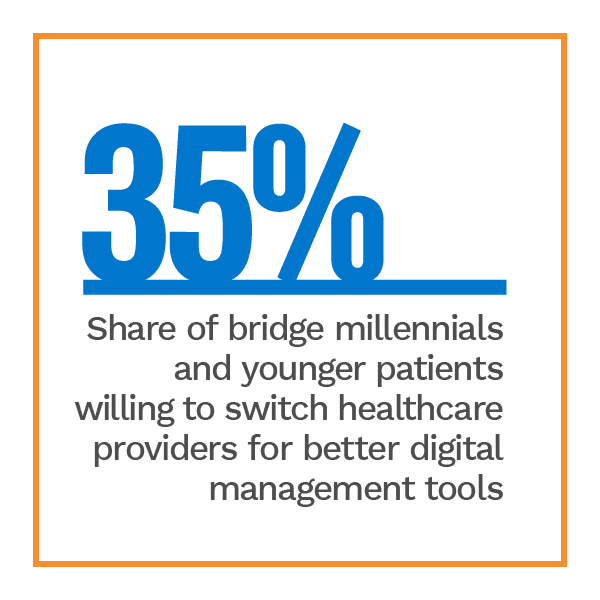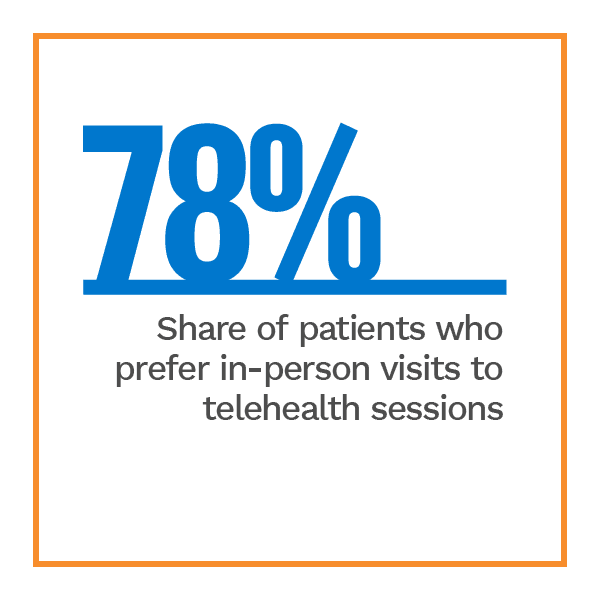REPORT: Consumers Demand Digital Be Part Of Their In-Person Healthcare Experience

 Consumers have returned to visiting their local healthcare providers in person, but digital tools that make it easier for them to manage their healthcare experiences are still in demand. In Connected Healthcare: What Patients Want From Their Healthcare Customer Experiences, a PYMNTS collaboration with Rectangle Health, PYMNTS reveals the digital healthcare tools that matter most to patients and how access to time-saving customer service features can help boost healthcare consumer engagement. The study, which took place between April 14 and 26, 2021, used data from a survey of 2,263 U.S. adults to uncover how consumer healthcare preferences have evolved since November 2020.
Consumers have returned to visiting their local healthcare providers in person, but digital tools that make it easier for them to manage their healthcare experiences are still in demand. In Connected Healthcare: What Patients Want From Their Healthcare Customer Experiences, a PYMNTS collaboration with Rectangle Health, PYMNTS reveals the digital healthcare tools that matter most to patients and how access to time-saving customer service features can help boost healthcare consumer engagement. The study, which took place between April 14 and 26, 2021, used data from a survey of 2,263 U.S. adults to uncover how consumer healthcare preferences have evolved since November 2020.
Patients are eager to return to in-person healthcare after a tumultuous year, according to our research, and 78 percent of consumers in fact prefer in-person healthcare services to telehealth ones. Patients returning to their healthcare providers’ offices have spent more than a year with access to digital tools that have enhanced their access to healthcare services, such as telehealth options.
Consumers — especially younger ones — continue to show a keen interest in using digital methods to save time and communicate with their healthcare providers. Bridge millennials and younger patients exhibited an increased interest in several key actions: reviewing their medical histories digitally, (rising from 64 percent in November 2020 to 68 percent in April 2021), filling out medical forms digitally (rising from 58 percent to 60 percent), communicating with healthcare providers securely (rising from 63 percent to 65 percent) and receiving payment notifications (rising from 59 percent to 60 percent).
Not o nly did younger patients show an interest in digital healthcare management, but the lack of access to these tools was also a dealbreaker for many, our research found. Despite high levels of healthcare provider loyalty among most consumers, bridge millennial, millennial and Gen Z patients care enough about digital healthcare management options that they lead every other demographic in their willingness to leave one provider for another that offers the digital options they desire. The report also revealed that the likelihood that Gen Z, millennial and bridge millennial patients would switch to providers that offer new digital healthcare management tools rose from 31 percent in 2020 to 35 percent in 2021.
nly did younger patients show an interest in digital healthcare management, but the lack of access to these tools was also a dealbreaker for many, our research found. Despite high levels of healthcare provider loyalty among most consumers, bridge millennial, millennial and Gen Z patients care enough about digital healthcare management options that they lead every other demographic in their willingness to leave one provider for another that offers the digital options they desire. The report also revealed that the likelihood that Gen Z, millennial and bridge millennial patients would switch to providers that offer new digital healthcare management tools rose from 31 percent in 2020 to 35 percent in 2021.
Patient interest in using digital tools to access healthcare extends to making healthcare payments less burdensome as well. PYMNTS researchers found the majority of healthcare consumers (56 percent) showed an interest in payment plan options, with patients across all demographics reporting interest in paying medical bills not covered by insurance using a payment plan. According to the report , there was a less than $800 difference in the threshold amount that would cause patients living paycheck to paycheck and those earning above $100,000 annually to seek out affordable installment payments.
, there was a less than $800 difference in the threshold amount that would cause patients living paycheck to paycheck and those earning above $100,000 annually to seek out affordable installment payments.
To learn how healthcare providers can leverage consumer interest in digital healthcare tools to build and sustain customer loyalty, download the report.